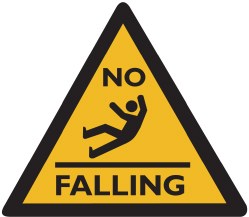Falls are the leading cause of hospitalization in seniors over the age of 65. They are reported to be responsible for hip fracture in 95 per cent of cases and account for about one third of moves into long-term care. The Canadian Community Health Survey reports that falls experienced by seniors are also the leading cause of traumatic brain injury.
Given the growing number of seniors in our society, the occurrence of falls in this segment of the population is cause for concern both financially and in terms of quality of life. The health care costs associated with falls in the senior population were estimated at $2 billion in 2004 and the number of falls reported in 2010 showed a significant increase according to the Report on Seniors’ Falls in Canada.
Wearing hip protectors may prevent hip fractures but ideally it’s best to prevent the fall to begin with.
Causes
There are many potential causes of falls in the elderly population; many times a fall is a result of a combination of risk factors. Illness, medication, vision, poor nutrition (vitamin D deficiency), cognitive impairment and physical weakness are just a few of the recorded causes of senior falls. The Canadian Public Health Agency conducts an annual report on seniors’ falls and has stepped up fall prevention efforts including education programs and communication.
Prevention
There are many preventative steps family and health care providers can take to make homes and institutions safer for senior citizens. A large percentage of falls occur when walking, not necessarily in ice and snow but in normal household situations.
A home safety checklist helps caregivers identify potential hazards and minimize the risk of falls in the elderly. Below are some of the most commonly identified ways to help prevent falls:
Living Areas
Remove throw rugs
Secure carpet with carpet tape
Remove low furniture and clutter on the floor
Remove wires or cords from the floor
Check for adequate lighting, especially leading to the bathroom
Install non slip treads on stairs
Remove chairs that are hard to get out of easily (too low)
Use only non-skid floor wax
Make sure a phone can be reached from the floor in all rooms
Bathroom
Install grab bars by shower and toilet
Use rubber mats in shower or bath
Take up bath maths when not in use
Install a raised toilet seat
Outside
Repair uneven surfaces
Install handrails on steps
Keep shrubs back off pathways
Install good lighting along pathways and steps
Footwear
Appropriate, supportive, proper fitting footwear is also essential for stability
The Safe Living Guide – A Guide to Home Safety For Seniors is available for viewing and downloading at www.phac.aspc.gc.ca . Falls prevention and balance retraining programs are often offered free of cost in community settings such as retirements homes and community centers.






Add Your Voice
0 Comments
Join the Discussion